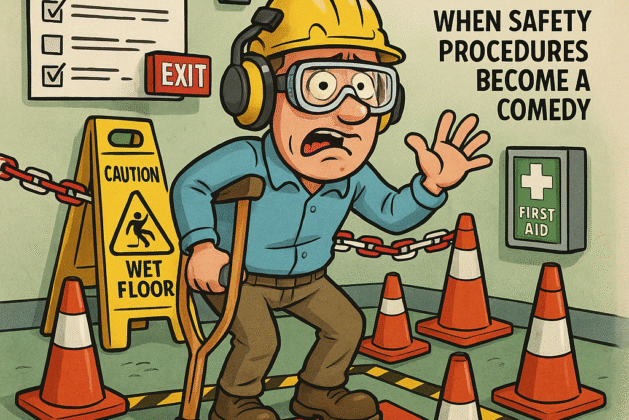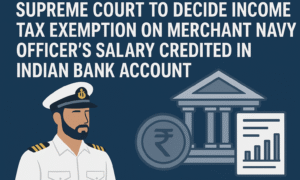Safety at sea is sacred. As mariners, we know better than anyone that cutting corners can cost lives. Hazard identification, risk assessments, and proper procedures are the backbone of our industry—when applied correctly.
But somewhere along the way, common sense jumped overboard, and we’ve been left drowning in paperwork for even the simplest tasks.
From Necessary to Nonsense: The Sinking of Practical Safety
There was a time when Permit-to-Work (PTW), Job Safety Analysis (JSA), Risk Assessment (RA) and Toolbox Talks were reserved for genuinely high-risk operations:
- Hot work near fuel tanks
- Enclosed space entry
- Working aloft in heavy weather
- Handling hazardous cargo
These were situations where a single mistake could mean disaster. The paperwork had a purpose—it forced us to stop, think, and mitigate real dangers.
But today? We’re asked to fill out 10-page risk assessments for jobs like:
- Changing a light bulb in the mess room (Hazard: “Potential electric shock if bulb is not switched off.” Control: “Ensure bulb is switched off before replacement.”)
- Carrying a box of paperwork to the bridge (Hazard: “Muscle strain if lifting improperly.” Control: “Use correct lifting technique.”)
- Plugging in a laptop (Hazard: “Tripping over cables.” Control: “Secure cables properly.”)
At what point did we decide that professional seafarers—who navigate storms, engine failures, and piracy threats—need a written procedure to remind them not to trip over a power cord?
The Real Danger: Safety Fatigue
This over-the-top bureaucracy isn’t just annoying—it’s counterproductive. Here’s why:
- It Wastes Time – Officers spend more time filling out forms than actually managing risks.
- It Breeds Complacency – When every task requires the same level of paperwork, crews stop taking the real hazards seriously.
- It Undermines Authority – An electricalofficer shouldn’t need a checklist to know that working on live electrical systems is dangerous.
Worst of all, it turns safety into a joke.
When crews see a JSA for “using a ladder to access the storeroom,” they start rolling their eyes at all safety procedures—even the critical ones.
Who’s to Blame? The “Zero Harm” Myth
The root of this madness isn’t the ship’s crew—it’s shore-based management, auditors, and insurance companies who’ve never spent a night on a rolling deck but insist on “100% compliance.” They’ve turned safety into a box-ticking exercise, where the goal isn’t preventing accidents but avoiding liability.
How Do We Fix This?
- Bring Back Common Sense – Not every task needs a JSA. Trust experienced mariners to assess risks on the spot.
- Focus on Real Hazards – Reserve detailed assessments for high-risk operations (enclosed spaces, hot work, heavy lifts).
- Simplify the Process – A 5-minute toolbox talk is often more effective than a 10-page form.
- Push Back Against Shore Bureaucracy – Senior officers should challenge unnecessary paperwork instead of blindly enforcing it.
Conclusion: Safety Should Be Smart, Not Stupid
We don’t need more paperwork—we need better judgment. Risk assessments are vital when used correctly, but drowning crews in pointless forms doesn’t make anyone safer. It’s time to cut the nonsense and get back to real safety at sea.
What’s the most ridiculous risk assessment you’ve seen onboard?
Share your stories in the comments—or better yet, contribute to Shippys.org and let’s bring sanity back to maritime safety!
#MaritimeSafety #CommonSense #RiskAssessment #MerchantNavy #StopThePaperwork



Leave a comment